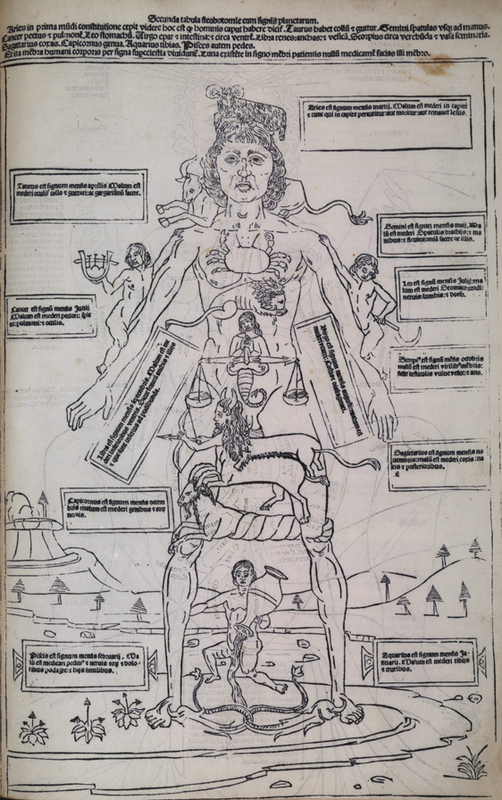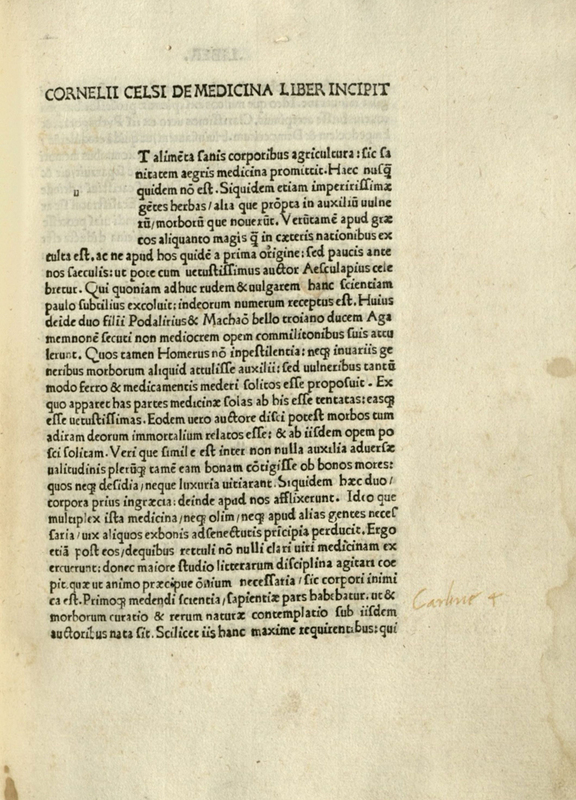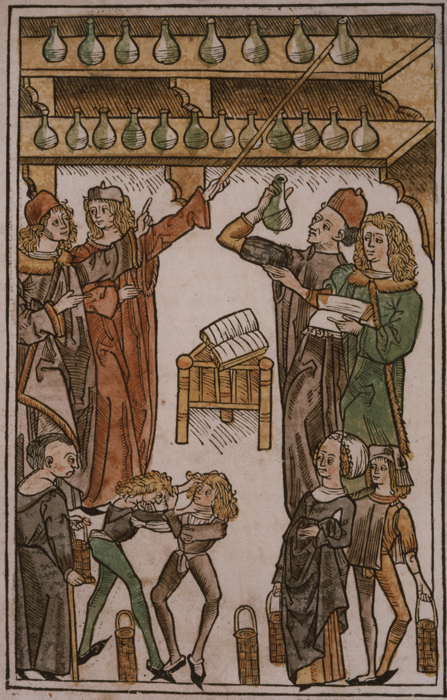Page 2
The thirteenth-century Italian scholastic, Petrus de Abano, translated Hippocrates, Galen, and many other classic Greek medical texts into Latin. His major work, the Conciliator differentiarum [Reconciler of the Differences Between Philosophers and Physicians] represents his attempt to answer medical questions through a synthesis of Greek, Arabic, Jewish, and Latin authorities, including Aristotle, Avicenna, and Averroës. A woodcut displaying the abdominals is the first full-length illustration of muscle dissection.
Although notable as one of the first incunables acquired by the Boston Medical Library, this first edition of the Fasciculus medicinae is also a cornerstone in the history of medicine, as it contains the first detailed anatomical illustrations ever printed. There are six woodcuts in the Fasciculus: a circle of urine glasses; a diagram of the veins for phlebotomy; a pregnant woman; a chart of wounds and one of disesases; and a second phlebotomy diagram which associates the parts of the body with the signs of the Zodiac.
One of the first medical books ever printed, the De medicina is a compilation of knowledge of diet, pharmacy, and surgery from the time of Imperial Rome, circa 30 A.D. In the Renaissance, Celsus' elegant style earned him the title of Cicero medicorum, the Cicero of physicians. His De medicinaappeared in more editions than almost any other scientific text. It was printed four times during the fifteenth century, and over fifty editions had been produced by the nineteenth century.
The first edition of De medicina is notable for the appearance of a number of medical innovations and classic descriptions. These include the use of ligatures; surgical operations for crushing bladder stones and hernias; the first appearance of the terms insania [insanity] and cardiacus [heart disease]; plastic repair for mutilations of noses, lips, and eyelids; treatments for jaw fracture; and tooth extraction, fillings, and oral surgery. The De medicina also contains the first history of medicine, and it was Celsus who originally translated Greek medical terms into Latin.
The first German edition of Hartmann Schedel's famous Nuremberg Chronicle traces the history of the world through six ages, from the Creation to 1493, concluding with the Apocalypse. Michael Wolgemut and Wilhelm Pleydenwurff designed maps, city views, portraits of saints, popes, and kings, and Biblical scenes—over 1,800 woodcuts in all-making the Chronicle the most lavishly illustrated book of the fifteenth century.
The Hortus santitatis [Garden of Health] was a popular compendium of plant and herb lore during the Middle Ages. This is the first Latin edition, and twenty others were printed in Latin before 1547 attesting to its popularity. In addition to botanical information, it contains tracts on fish, birds, and other animals; mining and gemstones; and a work on the analysis of urine.





